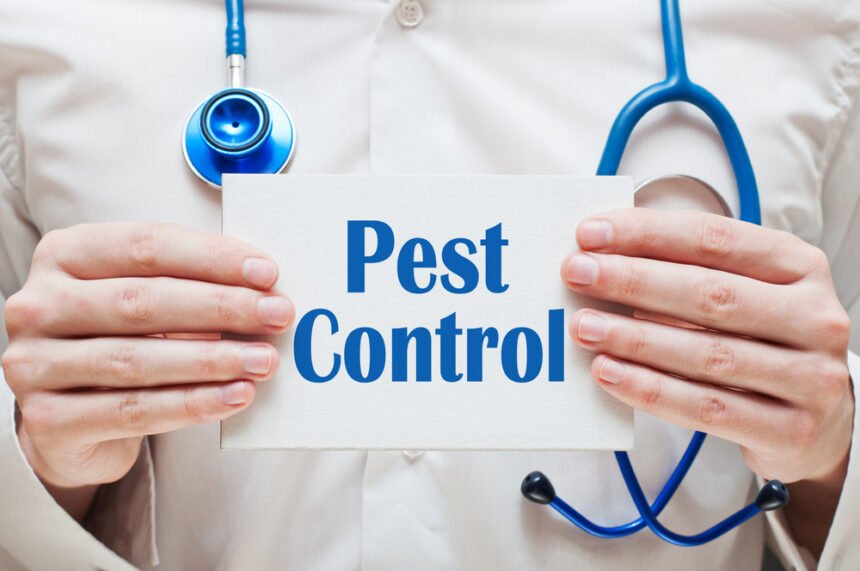Have you ever stopped to marvel at the joy your home gives you? The laughter of your children echoing through the hallways, the playful barks of your pet shaking you out from your work-induced stupor, or the quaint quietness when everyone is asleep, revealing the familiar hum of your abode? Despite the comfort these evoke, have you ever paused to ponder the unseen threats lurking within your home? Well, if not pest control, then what? In this post, we delve into the crucial role of pest control in safeguarding your family’s health, especially that of your children and pet companions.
Beneath the happy hush and familiar scuffle of your daily life, a silent, sinister war is raging. Yes, we’re talking about pests – cockroaches, rats, mosquitoes or the hidden legions of termites gnawing away at your house structure. Unwelcome guests that could possibly pose a significant threat to the wellbeing of your family. But fret not! Recognising the problem will empower us to take appropriate measures and what could be more suitable than a comprehensive pest control arrangement?
Taking a step further, one might ask, what makes pest control indispensable? What steps it involves? And how does it work to protect your loved ones? Throughout this blog post, we aim to answer these questions while highlighting the importance of pest control in ensuring your family’s safety.
Why is Pest Control Vital in Your Home?
Pests are not just unsightly invaders; they’re carriers of potential health risks. Some pests trigger allergies and asthma attacks, while others contribute to food contamination and diseases like salmonella and E. coli. When it comes to kids and pets, they are more susceptible to these health threats given their weaker immune systems and their propensity to explore spaces that might be infested.
Unchecked pests can wreak havoc not just on your family’s health but also on your physical property. Termites, for instance, can compromise the structural integrity of your home, causing thousands of dollars in damage. The extent of the danger becomes clear when we understand that these threats can exist undetected for a considerable amount of time.
An effective pest control routine is much more than simply ‘exterminating’. It involves proactive measures of prevention, definite identification of existing pests, deciding the right control measures, and constant monitoring.

When is the Best Time for Pest Control?
A common misconception is that pest control is only necessary when an infestation has occurred. In reality, preventative measures are most effective when applied regularly. The term ‘pest control’ is somewhat deceptive because more accurately, we’re striving for a balance, not outright annihilation. We need bees for pollination and spiders to keep some insect numbers down, highlighting the delicate nature of our eco-system.
Typography of each house, location and environmental factors contribute to determining the right interval for pest control measures. When setting up a pest control schedule, it’s also vital to consider the usual behaviour and reproduction cycle of pests known to invade our homes.
Who Should Perform Pest Control?
While DIY pest control methods may seem like a convenient, fast and cost-effective first resort, professional pest control services often provide more long-term results. They have extensive knowledge of pest behaviour, can accurately identify pest types and infestations, and apply treatment techniques that are safe for both humans and pets. For in-depth problem-solving and lasting pest-free peace, it’s recommended to consider expert pest control services.
Hazards of Unregulated Pest Control
Pesticides, if used incorrectly, can pose serious health risks. Children, in particular, are more likely to get exposed to pesticides used at homes, as they often play on the floor or grass, where these chemicals are usually applied. Pets, like dogs and cats, can also be at risk of pesticide exposure as they have a habit of licking their fur.
The environmental impact of unregulated pest control isn’t negligible either. Often, pesticides sprayed haphazardly make their way into soil, poisoning not just pests but also affecting the surrounding ecosystem.
The Benefits of Eco-friendly Pest Control
Eco-friendly pest control provides a viable alternative to harmful pesticides, reducing the potential health hazards to both family and pets. They work by targeting specific types of pests, preserving the balance in your immediate environment.
Organic products used in eco-friendly pest control are usually sourced from plants and minerals, which means that they decompose and integrate into the environment over a period. It’s a win-win for your family and our big, blue planet.
Precautions to Take during Pest Control
Even when professionals handle pest control, there are certain provisions you must take. Before any treatment, make sure to cover all food items, children’s toys, and pet food. Vacate your house during the treatment and allow it to properly ventilate afterward. Remember to clean surfaces before your children or pets return to their normal activities.
Conclusion
In the cocoon that is our home, protecting and providing safekeeping to our loved ones takes a myriad of forms. One such overlooked yet substantial aspect is the engaged responsibility of ensuring our spaces are free from pest invasions. The benefits far outweigh the cost, making it a worthwhile, indispensable part of home management. Fostering an environment of safety and well-being doesn’t have to a complex ordeal fraught with worries and doubts. With comprehensive information and the right team of professionals by your side, creating a pest-free sanctuary is but a few informed decisions away. Let us harness the power of knowledge, embrace proactivity, and weave our homes into abodes of wellness and health.




